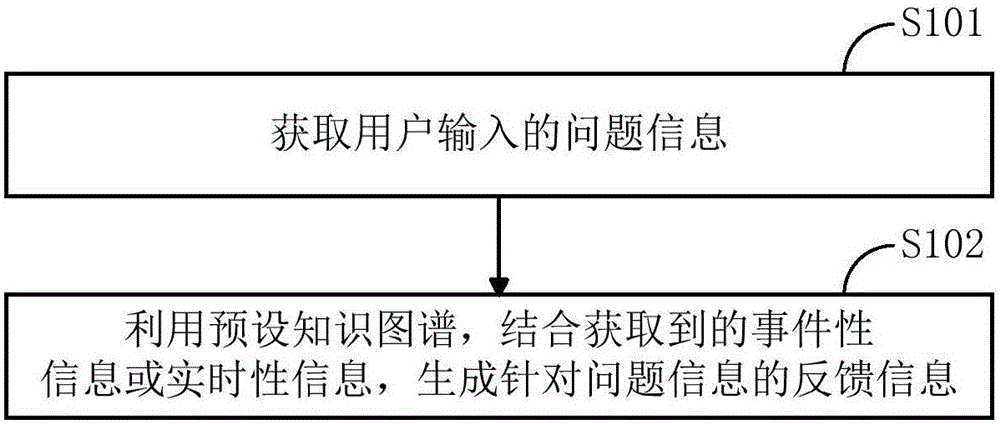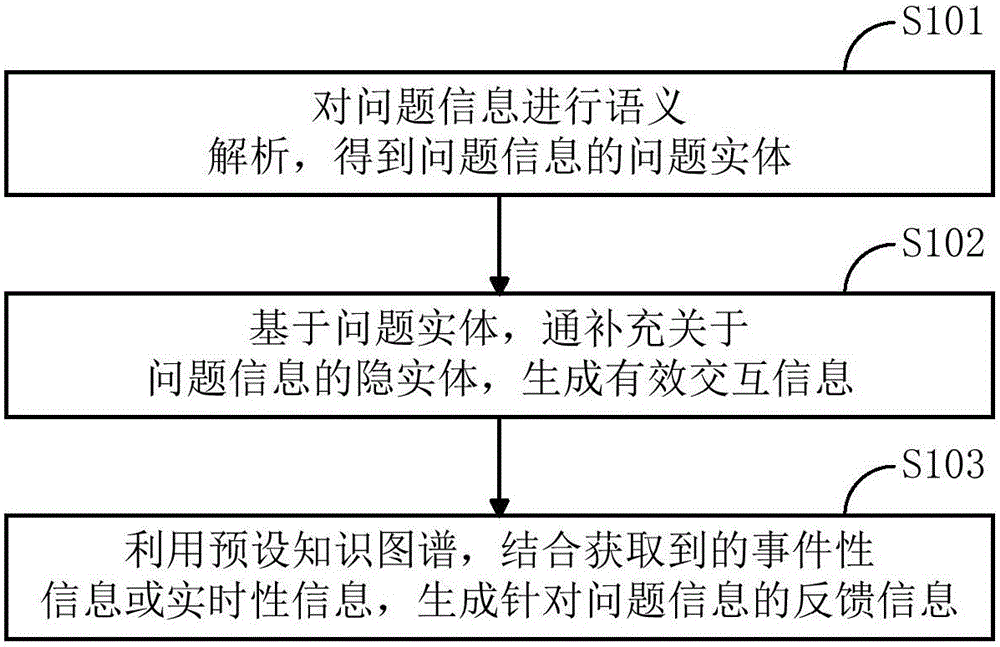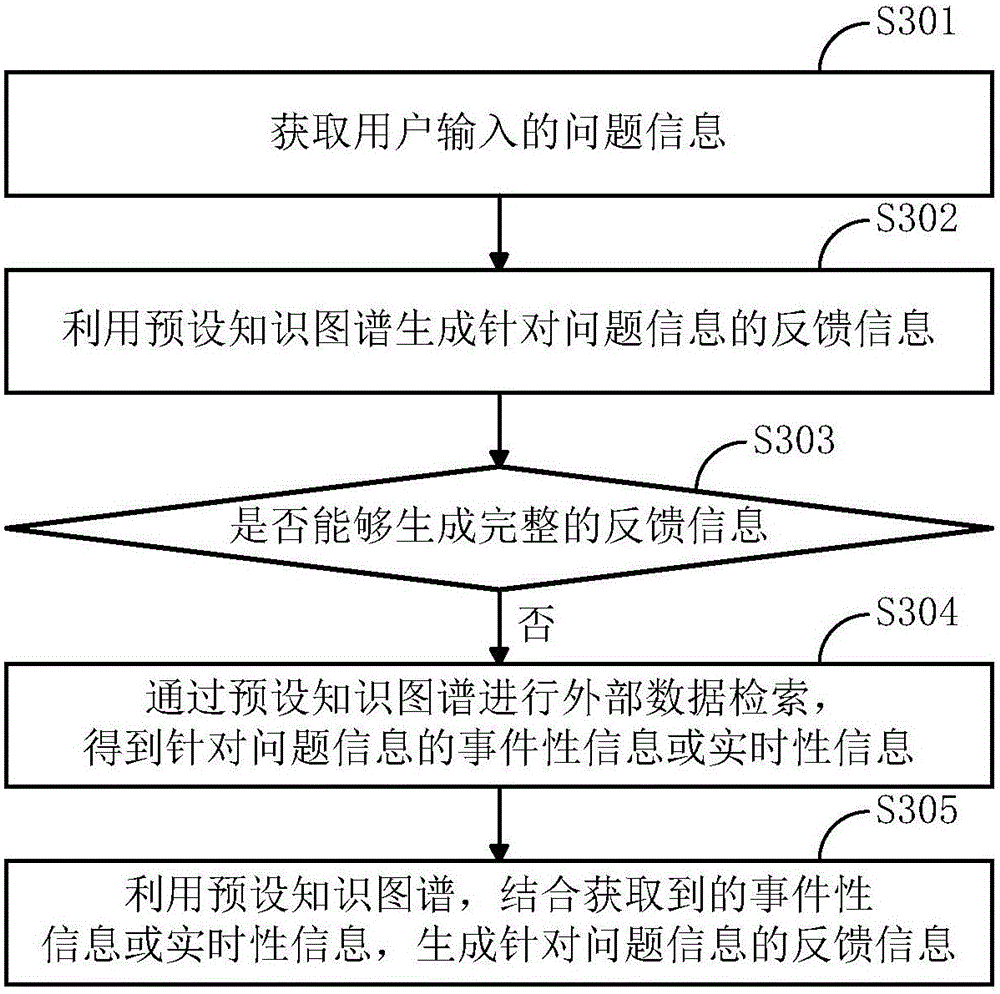Human-computer interaction method and device oriented to intelligent robot
An intelligent robot and human-computer interaction technology, applied in the field of intelligent robots, can solve the problems of outputting answers to different questions, inability to be vivid, and poor user experience of intelligent robots, so as to make up for the lack of data and improve user stickiness.
- Summary
- Abstract
- Description
- Claims
- Application Information
AI Technical Summary
Problems solved by technology
Method used
Image
Examples
Embodiment 1
[0041] figure 1 A flow chart of the intelligent robot-oriented human-computer interaction method provided by this embodiment is shown.
[0042] Such as figure 1 As shown, in this embodiment, the method first obtains the question information input by the user in step S101. After obtaining the question information input by the user, in step S102, the method utilizes the preset knowledge map and combines the acquired event information or real-time information to generate feedback information for the above question information.
[0043] Specifically, such as figure 2 As shown, when generating the feedback information for the question information, the method first performs semantic analysis on the acquired question information in step S201, so as to obtain the question entity of the question information; then in step S202, based on the obtained The problem entity supplements the hidden entity of the problem information, so as to generate effective interactive information of the...
Embodiment 2
[0062] image 3 A flow chart of the intelligent robot-oriented human-computer interaction method provided by this embodiment is shown.
[0063] Such as image 3 As shown, the method provided by this embodiment first obtains the question information input by the user in step S301. After obtaining the question information input by the user, the method uses a preset knowledge map in step S302 to generate feedback information for the above question information.
[0064] In this embodiment, in step S302, the method first performs semantic analysis on the question information obtained in step S301, so as to obtain the question entity of the question information; then, based on the obtained question entity, supplement the hidden entity of the question information, In this way, the effective interaction information of the question information is generated; finally, the obtained effective interaction information is retrieved by using the preset knowledge map, and the feedback informa...
Embodiment 3
[0071] As an important part of the intelligent robot question answering system, the knowledge graph provides technical support for the intelligent robot to achieve in-depth question answering. However, the existing knowledge graph has the problems of insufficient data volume and single data extraction method. Most of the data in the existing data graph is the existing data of the encyclopedia database, which leads to the limitation of the existing knowledge graph for event and real-time Data cannot be effectively grasped.
[0072] To solve this problem, the intelligent robot-oriented human-computer interaction method provided in this embodiment can continuously expand the content of the knowledge graph, thereby solving the problems of insufficient data volume and single data extraction method in the existing knowledge graph.
[0073] Specifically, such as Figure 4 As shown, the method provided in this embodiment acquires the question information input by the user in step S40...
PUM
 Login to View More
Login to View More Abstract
Description
Claims
Application Information
 Login to View More
Login to View More - R&D
- Intellectual Property
- Life Sciences
- Materials
- Tech Scout
- Unparalleled Data Quality
- Higher Quality Content
- 60% Fewer Hallucinations
Browse by: Latest US Patents, China's latest patents, Technical Efficacy Thesaurus, Application Domain, Technology Topic, Popular Technical Reports.
© 2025 PatSnap. All rights reserved.Legal|Privacy policy|Modern Slavery Act Transparency Statement|Sitemap|About US| Contact US: help@patsnap.com



